A Guide to DnD 5e Classes
Published on July 23, 2019, Last modified on February 20th, 2023
Choosing your character’s class is one of the most important decisions you will make when creating your character for a new campaign.
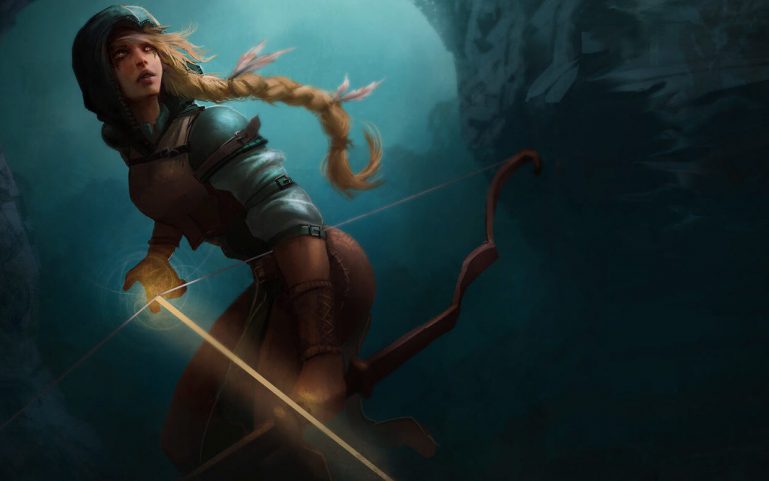
Table of Contents
Quick Look at DnD Classes
The following classes are available to play in DnD 5e:
| Class | Type | Short Description | Class Guide |
|---|---|---|---|
| Artificer | Ranged Damage, Utility, Support Caster | A tinkering support caster that can craft items for your party. | Artificer 5e Guide |
| Barbarian | Tank, Melee Damage | A primal warrior that relies on their rage to fuel their combat prowess. | Barbarian 5e Guide |
| Bard | Support Caster, Utility | A silver-tongued minstrel that taps in the magic of music to cast spells. | Bard 5e Guide |
| Cleric | Healer, Support Caster | A devoted follower of a deity that harnesses the power of their faith for magic. | Cleric 5e Guide |
| Druid | Tank, Support Caster, Healer, Utility | A nature-based magic user that can shapeshift into animal forms. | Druid 5e Guide |
| Fighter | Tank, Melee Damage, Ranged Damage | Born and bred in battle, the Fighter is a master of combat. | Fighter 5e Guide |
| Monk | Evasive, Melee Damage | A skilled martial artist, the Monk can manipulate their Ki to perform extraordinary feats. | Monk 5e Guide |
| Paladin | Tank, Healer, Support Caster, Melee Damage | A warrior whose devotion to their Oath provides magical powers. | Paladin 5e Guide |
| Ranger | Ranged Damage, Survival | A master of survival who uses knowledge of the outdoors to track foes and provide advantages in combat. | Ranger 5e Guide |
| Rogue | Stealth, Evasive, Ranged Damage, Melee Damage | A stealthy lurker of the shadows, specializing in backstabbing and trickery. | Rogue 5e Guide |
| Sorcerer | Spell Damage, Battlefield Control | A magic-user that can use their meta magic abilities to shape spells in unique ways. | Sorcerer 5e Guide |
| Warlock | Spell Damage, Battlefield Control | A wielder of Eldritch powers that focuses on mental manipulation and blasts of arcane power. | Warlock 5e Guide |
| Wizard | Spell Damage, Utility, Support Caster | Wizards take a scholarly approach to magic and are able to play with the fabric of reality. | Wizard 5e Guide |
Choosing the right class for yourself AND your character will dictate the effectiveness of your character’s career. Making sure you choose right the first time is imperative, as once you start playing a character, it’s quite a pain to go back and re-roll a new one. Not only will the time you invested into creating your first character be wasted, but your campaign will have to accommodate the new character. This creates work for your DM and interrupts the story as your new character is introduced.
This article goes into depth on each DnD 5e class and will give you the proper tools to make the right decision for your character.
What is a Class in DnD 5e?
Fun Fact: Dungeons & Dragons was the first formalized game to use the character class mechanic.
This article provides a general overview of the 5e character classes. A character’s class is the most important thing to consider when creating a character in D&D 5e. Your character’s class determines their skills and abilities, ultimately dictating how they are played. Skills are determined by particular Class Features, while abilities are measured by Ability Scores. While not quite as pivotal, your character’s background, race, spells, and feats (if available) will also define the way the character is played.
If you are looking to take a deep dive into a particular class build, check out our Class Guides which are linked in the table above as well as in the class descriptions below.
[adinserter block=”7″]
How Ability Scores Shape Your Character
There are six Ability Scores used in DnD 5e:
- Strength (STR)
- Constitution (CON)
- Dexterity (DEX)
- Intelligence (INT)
- Wisdom (WIS)
- Charisma (CHA)
Classes like Barbarians and Fighters are Strength and Constitution focused, meaning that they specialize in hitting things and getting hit by things.
On the other hand, Wizards, Artificers, and Druids are magic users that cast spells with Intelligence and Wisdom. This means they will be very resourceful when stuck in a tricky situation, but won’t be as useful if caught in a tavern brawl.
Dexterity-based characters like Rogues and Rangers are effective at sneaking and doing ranged damage. These characters like to use bows or other dexterity-based weapons to seek advantages and catch their enemies by surprise.
Finally, Charisma-based characters are Bards, Warlocks, and Sorcerers. These classes cast spells with their Charisma and are usually the ones in your party to talk their way out of (or into) situations.
Each Class comes with its own strengths and weaknesses. For example, your super strong Barbarian may be great at cracking skulls but isn’t going to be the one to win over a diplomat in a civil discussion. Before choosing your character’s class, you want to make sure you consider all of your options and the strengths, weaknesses, and playstyles that come along with each of the classes.
Your Options
Artificer

The Artificer is the first full-fledged class to be added to D&D 5e outside of the Player’s Handbook. Artificers were first introduced in the sourcebook Eberron: Rising from the Last War and were reprinted in Tasha’s Cauldron of Everything. The Artificer is an extremely unique class because it is the only class to have a large focus on items.
The Artificer’s class features revolve around Magical Tinkering and Infuse Items, both of which are able to give mundane items extra abilities or effects. Even their subclasses are primarily focused on items, whether it is crafting potions, animating a suit of armor to fight for you, turning your wand into a firearm, or crafting yourself a friend to defend you in combat.
Strengths
The Artificer is a support/utility class through and through. Being able to craft items and have a wide variety of utility spells allows Artificers to have a way to gain a leg up in combat and adventuring situations. The biggest advantage they can offer their party is through the Artificer Infusions. These Infusions can create powerful magical items that, in a system like 5e, provide a huge advantage to your party by boosting their power beyond their current level.
Weaknesses
The Artificer’s uniqueness tends to get in the way of its actual effectiveness. One of the main issues with the Artificer is how few spell slots they are given. For a class that has INT as its primary stat, they don’t get a whole lot of use out of it until 7th level when they get Flash of Genius.
Some Artificer builds can end up being underwhelming in combat. For the subclasses that are primarily spellcasting, they have very few actual damage, buff, or control spells due to the fact that their spells are mainly meant for utility. For the subclasses that will be wading into combat, they will quickly find their d8 hit dice can let them down. The Artificer’s main strength comes outside of combat, where they are able to tinker with items and provide lasting buffs to their party members.
Barbarian
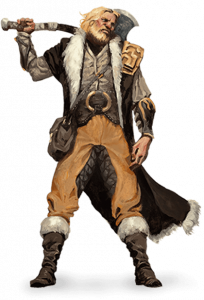
If you take a look at the Barbarian’s class features, it’s pretty obvious how they are meant to be played. Due to the Barbarian’s propensity for combat, you are usually going to put all of your Ability points into STR and CON, while dumping the other stats. This will give you the fantasy equivalent of the Hulk (complete with the uncontrollable rage!), which may leave you with a bit of a meathead but at least it will be your meathead.
Strengths
Barbarians are the kings and queens of melee damage in DnD 5e. They have the ability to go into a Rage to get a bonus to any check made using STR and a nice boost to damage. Barbarians also gain the ability to attack recklessly, which makes it easier to hit opponents, with the caveat that they get to hit you more easily.
Barbarians have the unique ability to absorb tons of damage. They have the highest hit dice in the game and when combined with a maxed out CON skill, will give them a ridiculous amount of hit points. As a bonus, when they Rage Barbarians take half damage on all physical attacks. Talk about tanky.
Weaknesses
The Barbarian’s weaknesses are what you might expect from the beefiest character class in 5e. Barbarians aren’t going to offer a whole lot in the way of utility, they’re more of a “go here and hit that” type of character.
In a situation in which they can’t punch, kick or bite their way out, Barbarians won’t be a lot of help to the party.
Bard

Most people who have seen a Bard played correctly will agree that Bards are one of the most powerful 5e classes, but they are also one of the most difficult to play. The Bard’s spell list demands that you think outside the box, and their high CHA modifier pushes you to interact with people constantly. The Bard class wants you to be gregarious, and it was designed this way on purpose. If you want to be silly, clever, and powerful, the Bard might be the class for you.
Strengths
The 5e Bard is a bit of a jack of all trades. Depending on how you want to play your Bard, you can flaunt the combat prowess of a Fighter, the dexterous skill set of a Rogue, or the magical power of a Wizard.
Bards also get a feature called Bardic Inspiration which allows them to give any party member an extra die to roll on an attack or skill check. This ability by itself is amazing on its own, but when accompanied by the Bards’ powerful spellcasting, comfortably provides them the title of the best support class in 5e.
Weaknesses
This is an interesting discussion as it is quite a common opinion that Bard’s are a very powerful 5e class. A weakness for Bards, that would be a strength for some people, is the amount of roleplaying that is necessary for the character.
When DMs are asked about players that don’t like to roleplay or take the lead in NPC conversations, most will reply with, “that’s okay, no one needs to play an extroverted character”. While this is true for most classes, a Bard’s strengths are really only maximized when that player is interacting with other party members and NPCs.
If you do not feel comfortable being the face of your party, choosing a Bard may be a tough go.
Cleric

When most people think about the Cleric class, they think of the quiet party member who heals those in need and throws some ranged spells around when no one’s hurt. While 5e’s Cleric can be like that, they can also be heavy armor wearing, mace wielding, summoning-lighting-bolts-with-one-hand-while-mass-party-healing-with-the-other…ers. Like Druids and Bards, Clerics are spellcasters that have a ton of versatility and a long list of roles they can fill.
Strengths
The Cleric’s spell list has a definitive focus on healing and buffing your party members. Keeping everyone in the fight by healing or making them harder to kill is extremely valuable to any party.
After spellcasting, Domains are the Cleric’s biggest class feature. A Cleric’s Domain is a defining aspect of your character as they represent what your Cleric worships. Each Domain gives you bonus Domain Spells, unique abilities, and a bonus to damage with either spells or weapons.
Weaknesses
Having a solid healer/buffer in your party is indispensable, although some might call it the “boring” job. While 5e Cleric builds can be varied and don’t have to necessarily focus on healing, your party may rely on you for support when situations get rough. Announcing you are playing a Cleric is kind of like announcing you will be the designated driver, your friends are likely to get themselves into a bit more trouble knowing they have someone to bail them out.
Apart from that, the biggest issue Clerics are likely to run into is that their spell list contains a lot of concentration spells. Concentration forces spellcasters to remain focused on a spell for the duration of its effect and will cause them to drop the spell if they take enough damage or cast another spell that requires concentration. If you’re not careful, you can end up wasting a spell slot or dropping a spell at an inopportune moment because of poor concentration management.
Druid
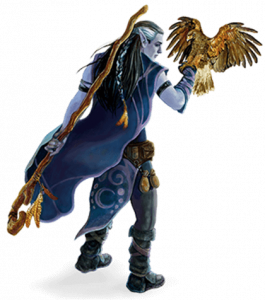
What do you get when you cross a Cleric with a hippie?
Druids are a really cool support class with tons of versatility. Want to sneak like a Rogue? Turn into a Giant Spider. Want to tank and deal damage like a Barbarian? Turn into a Brown Bear. Want to heal and buff the party? You’ve got spells for that.
Druids can wear many hats in an adventuring party but have limited resources to do them all. Ensuring you’re keeping an eye on your spell slots and Wild Shapes will be key to playing a successful Druid.
Strengths
A Druid’s main class feature is shapeshifting (called “Wild Shape”) into beasts that they have seen before. This ability gives the Druid a ton of utility, both in and out of combat, as they are able to transform into an animal like a bear for tanking damage or a spider for climbing to hard-to-reach places.
Beyond their Wild Shape feature, Druids are a great spellcasting class as they have access to spells all the way up to 9th level. This, combined with their Wild Shape abilities, allows them to be versatile with healing, tanking in combat, and utility outside of combat.
Weaknesses
To help balance the pure awesomeness that is Wild Shape, most of the beasts you can transform into have a low Armor Class, meaning they are easy to hit and kill in combat.
Their spell list is also a bit weaker than Sorcerers/Wizards as they don’t have access to the big damage spells like Fireball. This lack of damage spells extends to their cantrips, so early levels can feel like a bit of a slog if you find yourself running out of Wild Shapes.
Fighter
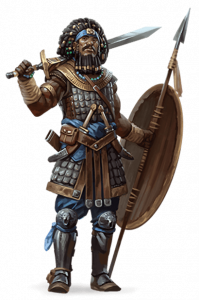
Fighters are meant to be among the best damage dealers and soakers in DnD. This means that you will be at your most useful whenever Initiative gets rolled. Outside of combat, Fighters can definitely still be effective additions to the party but they will feel out of their element in tricky situations where punching isn’t going to help.
Strengths
Funnily enough, Fighters are good at fighting. They get access to all weapons and armor, and by 2nd-level they are given skills to heal themselves. These class features plus their extra attacks at the 5th, 11th, and 20th-level ensure that the Fighter class is the epitome of a melee damage dealer.
Some people may be put off by this and say that they don’t want to play a character that is a one-dimensional “hack and slasher”, but that’s not that the case with Fighters. Because of the Fighter’s varied subclasses, you can definitely go for the straight-up damage-dealing Champion, but you could also play as an Eldritch Knight who uses magic to supplement his melee capabilities or a Battle Master that allows you to influence the battlefield in a strategic manner. No matter what type of Fighter you build, you can be sure that they can put down more pain than just about any class in a combat situation.
Weaknesses
While Fighters are amazing at combat, some complain that they lack versatility outside of combat. Because of their need to output and soak damage in combat, they usually have to put all of their eggs into the STR/DEX and CON basket. This means having low CHA for social interactions and low WIS/INT for problem solving and spellcasting.
Monk
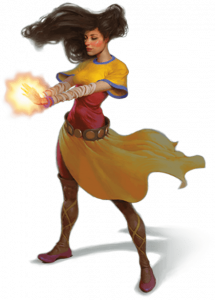
Monks are a very unique and fun class to play. Some say they are underpowered, but it’s hard to deny that playing a ninja is awesome.
Monks are great support characters as they have the ability to move through combat with relative ease, going where the fighting is thickest or getting out of difficult situations. They also have some really cool out-of-combat features that make them great candidates to be the stealthy infiltrator of the party.
Overall, a Monk isn’t going to be the class you choose if you are planning on being the strongest character in the party. They do, however, offer a very unique playstyle and can be an indispensable asset to the party if played correctly.
Strengths
Monks are a DEX-based class, which makes it easy to ensure your Monk is good at what they are supposed to be good at. By focusing primarily on DEX, you can ensure your character:
- Is hard to hit
- Does a fair amount of damage
- Can sneak around like a ninja
Despite being a martial class, they also tend to have fun, varied gameplay because of their Ki features. One Ki feature, Stunning Strike, is particularly potent as it allows you to apply the Stunned condition to opponents, making Monk’s one of the more dangerous classes in one-on-one combat.
Weaknesses
Monks are a marital class that doesn’t have a lot of hit points or a particularly high AC. This makes them susceptible to getting knocked out when in close quarters combat (which is where they will likely be). They also deal an underwhelming amount of damage compared to other melee characters like Fighters, Barbarians, and Paladins.
Monks have class features that really come in handy at a distance as it allows them to catch projectiles and avoid anything requiring a DEX save quite easily. But in order to be effective in combat, most Monks need to get up close.
There are Monk archetypes that allow the class to become more deadly at range, but they still won’t be as effective as a Ranger or Rogue with projectiles.
Paladin

The Paladin is a class known for its heavy armor, damage output, and roleplaying demands.
Righteous warriors on the path of the Paladin must dedicate themselves completely to an Oath devoted to certain ideals. Some examples are:
- The Oath of Devotion is for the classic Paladin feel. They are typically lawful and the follower of some deity.
- The Oath of the Ancients is cool if you want to ease up on the lawful good roleplaying. Protectors of sacred groves as well as innocents, Paladins of the Oath of the Ancients devote themselves to protecting the Light from the darkness of the world, which is a pretty vague mission and gives some room for flexibility.
- The Oath of Vengeance is for people who want to go for a more Marvel’s Punisher vibe. This Oath is dedicated to the single-minded pursuit of the guilty at the cost of all else. Extremely mobile and terrifyingly efficient, Paladins of this Oath will never stop pursuing their prey.
Strengths
Paladins are another great option for a tanky damage dealer. They are a semi-spellcaster, meaning they only learn up to 5th level spells and have a limited pool of spell slots to draw from.
Paladins are proficient in all weapons and armor, so they have their pick of the litter when it comes to how they want to outfit themselves for combat. This, on top of their extra damage from Divine Smites, makes them one of the highest damage dealers available.
Paladins have a unique ability to be a sort of battlefield medic. They can be in the thick of the fray without getting killed and have a pool of healing to draw from thanks to their Lay on Hands class feature. The Paladin’s spells also have a focus on healing and. When combined with their ability to buff party members through their Aura of Protection, allows for some powerful party support.
Weaknesses
Paladins are known as one of the stronger DnD classes due to their damage output and versatility. Similar to Bards, Paladins are at their best when you are able to take advantage of what roleplaying and CHA can do for you. A Paladin’s Oath is what gives the class their holy butt-kicking powers and sticking to this oath is important to maintaining these powers.
The largest gaps in the Paladin’s arsenal are attacking at a distance and dealing area of effect damage. Their spells and class features mainly focus on dealing single target, melee damage. While they are great at what they do, Paladins can feel a bit out of their depth when having to deal with a ranged or highly mobile enemy.
Ranger
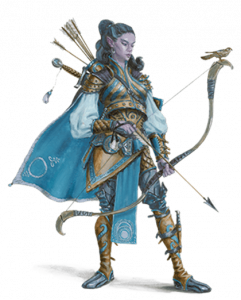
The common motif around the Ranger in DnD 5e is that of a skilled hunter, tracker, and woodsman, most at home on the fringes of civilization and the first line of defense against threats in the wilds.
Most Rangers are played as loners in social settings and will be more than happy to scout out ahead for the party. While their semi-caster status gives them some versatility, their class features get nerfed quite hard when traveling in environments that are not preferred or fighting enemies that are not their favored type.
Strengths
Rangers are the best of the martial classes against multiple enemies and hordes. Many of the Ranger’s combat abilities are designed for attacking multiple foes in a turn. To bolster that role, Rangers also have area of effect spells that can damage multiple foes.
Rangers have two other very unique abilities granted at 1st Level: Preferred Terrain and Favored Enemy. The Favored Enemy ability grants the Ranger advantages on attacking and tracking their favored enemy. Preferred Terrain helps the Ranger and their party survive, travel, and navigate certain environments.
Weaknesses
Many of the Ranger’s abilities, including the Favored Enemies and Favored Terrains class features, are highly situational and don’t always mesh well with the campaign’s setting, especially if you are traversing an environment where opportunities to scout are at a minimum.
When Rangers are not in their Favored Terrains or dealing with their Favored Enemies, their combat effectiveness and exploration abilities are heavily nerfed, so those abilities are situational at best.
Rogue
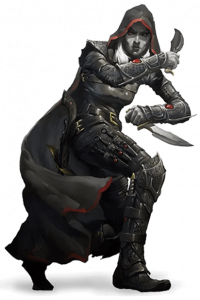
Rogues are definitely for the players that like to lie, cheat, steal, and backstab their way to victory. Because of the way their class features are activated, Rogues need to constantly be thinking about how to get an advantage over their enemies. The tendency of Rogues to be the scout of the party, combined with the unique nature of their combat abilities, means that Rogues are certainly among the more technical melee classes to play.
Strengths
Rogues are the stealthy thieves and assassins of the DnD world. Commonly referred to as “skill monkeys”, they are proficient in more skills than any other class except for Bards, which allows them to take the lead on a lot situations your party will run across. Things like scouting ahead, picking locks, and silently taking out enemy patrols are common tasks on a Rogue’s laundry list.
Rogues in 5e get an ability called Sneak Attack which allows them to get extra damage on unaware or flanked enemies. This ability goes hand in hand with the Rogue’s tendency to be the party’s scout and also dictates their more “hit and run” style in combat. This ability provides an insane amount of single target damage and is the Rogue’s main way to keep up with the damage output of the other melee classes.
Rogues also get plenty of extra action economy from their Cunning Action class feature which allows them to disengage, dash, or hide as a bonus action.
Weaknesses
Rogues are not front-line warriors; they have neither the hit points nor the AC for prolonged exchanges. If your party gets caught out in the open and without the element of surprise Rogues can go down pretty easily.
Due to their high number of proficient skills, Rogues are usually scouting out ahead for dangerous situations. One bad roll could mean your Rogue gets discovered by a group of baddies or fails to notice a trap that drops you into a spike pit.
Sorcerer
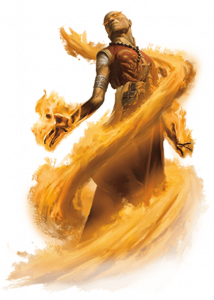
Sorcerers are different from Wizards in that their magic comes from innate magical talent passed down through their bloodline rather than studying the arcane arts.
Sorcerers have a relatively short spell list, fewer spells they can learn when leveling up, and fewer spell slots when compared to Wizards. This is made up for by their versatility in spellcasting using the Metamagic ability. This ability allows Sorcerers to do things like duplicate spells, weave spells around friendlies, or recover used spell slots.
If you can look at the Sorcerer spell list, find ten spells that you are happy casting all day, every day, and aren’t going to constantly regret not having a dozen other spells available, then the Sorcerer will be a great choice.
Strengths
Sorcerers are full casters and are constantly compared to Wizards because both classes are entirely focused on spellcasting. The way they differ from the Wizard is a somewhat restricted spell list, the Fonts of Magic/Metamagic class features, and differently formulated subclasses.
The Sorcerer’s main class feature revolves around unique resources called Sorcery Points. Sorcery Points allow them to manipulate their spellcasting in unique ways, making their already practical spellcasting even more effective.
Much like Wizards, Sorcerers have access to all of the best damage dealing spells. This, combined with the Sorcerer’s Metamagic, allows them to go “nova” and deal out massive amounts of damage in a single burst.
Weaknesses
As mentioned above, Sorcerers have a restricted spell list compared to Wizards. Much like Druids, they learn spells as they level up and cannot learn any more until the next level up. This means that Sorcerers won’t have the utility that some other casters do, but the decrease in variety is certainly made up for in the buff to sheer damage and utility Sorcerer Points can provide.
As with other full casters, Sorcerers are susceptible to melee damage as they have low AC and hit points. They also have to manage their resources more effectively than melee classes. If your party is having a particularly bad day with no time for a Long Rest, Sorcerers can run out of spell slots and Sorcery Points quite easily, meaning they will have to rely on weaker, non-limited spells called cantrips.
Warlock
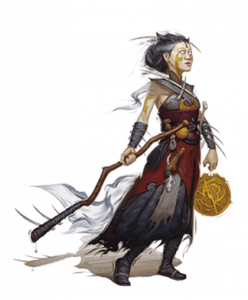
Warlocks get their powers by dedicating themselves to an Eldritch Being. These Beings tend to be on the dark side, so your character might have a tough time getting along with a party’s lawful good Paladin or religious Cleric. This devotion to an Eldritch Being comes with a fair share of issues, so you may find yourself in tough situations where your party is wanting to do one thing but your Eldritch Patron wants another.
Warlocks are not area of effect blasters like the evoker Wizard or a Sorcerer. Instead, they have a few major defining aspects – Eldritch Blasts, Curses, and Mind Control.
Strengths
The Warlock is another full caster class but, like Sorcerers, they have a few quirks that make them vastly different from the original full caster, Wizards.
First of all, Warlocks are CHA-based casters. Secondly, they have a very reduced number of spell slots and can only ever cast spells at their highest level. This means that all of your spells are going to pack one hell of a punch with the caveat that you will run out of spells slots quite easily.
One good thing to note about this is that Warlocks regain all of their spells slots with a short rest, so with as little as one hour of downtime Warlocks can be back at full offensive strength.
Warlocks also have a number of passive abilities called Eldritch Invocations. A staple invocation called Agonizing Blast allows Warlocks to add the CHA modifier to their best damage Cantrip, Eldritch Blast. These invocations make Warlocks one of the most customizable classes out there and provide a number of different playstyles.
Weaknesses
A Warlock’s spell slots are its biggest weakness. Up until 10th-level they only have two spell slots per short rest, and only ever get up to four spell slots at the 20th-level. This means that Warlocks can wind up without any spells very quickly if your party runs into trouble.
This, combined with the fact that Warlocks don’t get a ton of other combat-focused abilities (outside of the Hexblade subclass), means that a Warlock’s resources can get used up pretty quick and they become very reliant on cantrips.
Wizard

Wizards are spellcasters that have studied the fundamental forces of magic itself in order to weave it to their will.
Wizards are a class that relies on their INT to cast spells, outsmart opponents, and get themselves out of tricky situations. This reliance on INT will likely become apparent to players as they realize that they have to use their brain to manage a massive spell list and be the party member everyone relies on to always have a plan (thank Gandalf for setting that unrealistic expectation).
Strengths
The Wizard class is the epitome of a full caster. They have an unparalleled spell list that they can prepare spells from every day to ensure they are always ready for whatever situations may arise.
The Wizard’s strengths really lie in their versatility. Falling from a building? Got a spell for that. Need to kill a clumped together group of bad guys? Got a spell for that. Need to infiltrate a tightly patrolled encampment? Got a spell for that.
Weaknesses
A Wizard’s weaknesses are about what you would expect. They have very low AC and hit points and are pretty useless when it comes to a fistfight.
FAQs About 5e Classes
Q: Which Classes Can You Play in D&D 5e?
A: The following classes are available for play in D&D 5e: Artificer, Barbarian, Bard, Cleric, Druid, Fighter, Monk, Paladin, Ranger, Rogue, Sorcerer, Warlock, Wizard. The new Eberron: Rising from the Last War setting is the first sourcebook to introduce a new class, the Artificer, which was later reprinted in Tasha’s Cauldron of Everything.
Q: What is the best class in D&D 5e?
A: The great thing about D&D 5e is that all classes are viable and you can play whatever class you think will be the most fun. Some hard and fast rules would be: Bards are the best supportive spellcaster, Paladins are the best against a single enemy, and Wizards are the strongest at higher levels.
Q: Which D&D 5e Sourcebook has classes?
A: The Player’s Handbook (PHB) contains all playable classes except the Artificer. It provides the class features and some subclass options for those classes. Different sourcebooks such as Xanathar’s Guide to Everything and Sword Coast Adventurer’s Guide contain different subclass options if you would like to expand what’s available to you.
Closing Remarks
Wizards of the Coast has done an amazing job of making every 5e class unique and viable. While some characters are objectively stronger than others, this is a roleplaying game. Choosing the class that most reflects the character you want to play is more important than squeezing every last bit of damage out of a build. You will find that knowing your character’s abilities, paying attention to the DM, and being creative can make any class the strongest character in the party.
Hope you liked the article! If you have any questions or feel we’ve missed anything go ahead and post a comment below. If you like our content subscribe to Arcane Eye!

Blood hunter needs to be added.
Hi! This article focuses on published D&D material only. We will be working on another article regarding the most popular homebrew classes 🙂
I am going to be a warlock but what race is best for them?
I am a 12 year old so I do not know much about d and d.
Hey Emma, really awesome that you want to get into D&D ???? For a Warlock you could try a Half-Elf or a Tiefling, but really just pick anything you think looks cool! If you want to know more, take a look at our Warlock Guide. Have fun!
I would also recommend Tielfing or Aasimar if you want to use the newer versions of D&D
What classes are better to play for a beginner Solo Adventure? Each class has strengths and weaknesses to contribute to a party but what’s best for a stand alone character adventuring solo? I’m new to D&D and learning on my own during this pandemic. Thanks for your help.
I would suggest playing a Paladin. They are great damage dealers and have access to really good combat spells and smites. Their defense is solid with heavy armor and a d10 hit die. They can self heal, have a decent CHA for out of combat social situations, etc. The biggest downside will be DEX based activities (ranged enemies, stealth, etc) because Paladins are really not cut out for those sorts of things.
I can already imagine a “Mandalorian” type of Vengeance Paladin solo campaign that features the paladin mowing through enemies while having to protect/escort a helpless NPC. Sounds awesome!